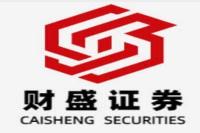WTO's "Re-globalization": A New Era of Inclusive Trade and Green Challenges
Meta Description: Dive into the World Trade Organization's (WTO) "re-globalization" strategy, exploring its ambition for inclusive trade, the challenges of green subsidies, and the potential for African nations in the global value chain.
The World Trade Organization (WTO), celebrating its 30th anniversary, has set its sights on a new era of “re-globalization” – a bold vision aimed at making trade more inclusive and equitable. This shift, however, comes with its own set of challenges, particularly in navigating the complex terrain of green subsidies and their impact on international trade.
This article delves into the nuances of WTO’s “re-globalization” strategy, examining its potential benefits for developing nations, especially those in Africa. We'll unpack the growing debate over green subsidies, exploring the implications for trade, climate action, and the WTO's role in resolving disputes.
By examining the latest developments and perspectives from key stakeholders, we aim to provide a comprehensive understanding of the evolving landscape of international trade in the face of climate change and the imperative for a more sustainable, equitable global economy.
The Re-globalization Imperative: A Pathway to Inclusive Growth
The WTO’s “re-globalization” strategy is not simply a rehash of the past; it’s a call for a fundamental transformation of the global trading system. The organization acknowledges that while the previous iteration of globalization brought substantial benefits, its fruits were not shared equally. The “re-globalization” vision, championed by WTO Deputy Director-General Zhang Xiangchen, seeks to ensure that developing countries, particularly those in Africa, are active participants in this new wave of global integration and reap its rewards.
Global Value Chain Opportunities for Africa
A core component of the "re-globalization" strategy is the re-evaluation of global value chains. The COVID-19 pandemic and geopolitical tensions have sparked a shift in corporate priorities, with companies increasingly prioritizing supply chain resilience and security over pure efficiency. This presents a unique opportunity for developing countries, especially those in Africa, to carve out a larger role in the global economy.
A Tale of Two iPhones: The story of the iPhone is a prime example. Initially, China's participation in the iPhone value chain was primarily focused on manufacturing. However, over time, the country has moved up the value chain, with Chinese companies now contributing significantly to the design, development, and production of components. This journey highlights the potential for African nations to follow a similar trajectory, leveraging their resources and capabilities to secure a more prominent position in the global value chain.
Beyond Manufacturing: The "re-globalization" strategy recognizes that Africa's potential extends beyond manufacturing. The continent possesses vast reserves of critical minerals, renewable energy resources, and a growing workforce, all of which can contribute to the global transition towards sustainability.
The WTO's Role: The WTO recognizes its crucial role in facilitating this process. It aims to create a supportive environment for African nations by promoting trade liberalization, reducing trade barriers, and providing technical assistance to enhance capacity-building. The organization is also working to ensure that global value chains are structured in a way that benefits all participants, fostering a more equitable and sustainable global economy.
Navigating the Green Subsidy Landscape: A Balancing Act
The “re-globalization” strategy unfolds against the backdrop of a growing global focus on tackling climate change. Governments are increasingly implementing green subsidies to incentivize the adoption of sustainable technologies and industries. While these subsidies are intended to promote climate action, they also pose a range of challenges for international trade.
The Green Subsidy Dilemma: Balancing Climate Action with Trade Rules
The WTO's existing rules on subsidies were designed for a different era. The current framework, primarily centered on the Agreement on Subsidies and Countervailing Measures (SCM Agreement), doesn’t explicitly address green subsidies. This lack of clarity has led to growing disputes, particularly regarding the use of green subsidies in the automotive sector.
The US-China Dispute: The recent trade dispute between the US and China over the “Inflation Reduction Act” (IRA) exemplifies this emerging challenge. The IRA's incentives for electric vehicle production, including tax credits for US-made vehicles and battery components, have been criticized by China as discriminatory and potentially disruptive to global trade. This dispute highlights the need for clear and consistent WTO rules governing green subsidies to ensure a level playing field for all nations.
Africa’s Perspective: The African Group, which represents a significant block within the WTO, has voiced concerns about the implications of green subsidies for their development. They argue that developed countries are using green subsidies to protect their domestic industries, potentially hindering Africa’s ability to compete in emerging green technologies. They advocate for a more inclusive approach that recognizes the unique needs and challenges of developing countries, ensuring that they have the space to pursue their own green industrialization strategies.
The Road to Resolution: Towards a Sustainable Trade Framework
The WTO is at a crossroads. The organization must navigate the complex interplay between green subsidies, climate action, and international trade. A key challenge lies in finding a balance that promotes sustainable development while upholding the principles of fair trade and non-discrimination.
Towards a New Framework: The WTO’s Trade and Environment Committee is actively engaged in discussions on green subsidies and their implications for trade. The organization is exploring the possibility of establishing a new framework for green subsidies that addresses concerns related to trade distortion and provides clarity for WTO members.
The Need for Collaboration: A successful resolution requires collaboration among WTO members, including both developed and developing countries. It’s crucial to find common ground, recognizing that the transition to a green economy requires a collective effort. The WTO’s “re-globalization” strategy must be underpinned by a robust framework that fosters a sustainable and equitable global trading system.
Key Takeaways and the Way Forward
The WTO’s “re-globalization” strategy represents a commitment to building a more inclusive and sustainable global trading system. However, navigating the challenges posed by green subsidies and other emerging issues will require careful consideration and a concerted effort to ensure that the benefits of trade are shared equitably.
Key Takeaways
- Re-globalization is not just about trade but about inclusivity: The WTO aims to ensure that all countries, particularly developing nations, benefit from global trade.
- Green subsidies are a growing area of concern: The WTO is working to establish a clear and consistent framework for green subsidies that balances climate action with trade rules.
- Africa has a vital role to play: The continent has the potential to leverage its resources and capabilities to secure a more prominent position in the global value chain.
The Way Forward
- Enhanced dialogue and collaboration: WTO members must engage in open and constructive dialogue to address the challenges of green subsidies and other emerging trade issues.
- Capacity building for developing nations: The WTO should provide technical assistance to developing countries to enhance their capacity to participate in global value chains and benefit from trade.
- Focus on sustainable development: The WTO’s “re-globalization” strategy should prioritize sustainable development, promoting trade policies that support climate action and environmental protection.
The WTO’s “re-globalization” strategy is a significant step towards a more equitable and sustainable global economy. However, achieving this vision requires a collaborative effort and a commitment to addressing the complex challenges that lie ahead. By working together, WTO members can shape a future of trade that benefits all, fostering a more prosperous and sustainable world for generations to come.
FAQs
Q: What are the key benefits of WTO's "re-globalization" strategy for developing nations?
A: The "re-globalization" strategy aims to create a more inclusive global trade system where developing nations, particularly those in Africa, have greater opportunities to participate in global value chains, attract foreign investment, and benefit from economic growth. It emphasizes a shift from simply focusing on efficiency to prioritizing security and sustainability in supply chains, creating openings for developing nations to offer these solutions.
Q: How does the WTO plan to address the challenges posed by green subsidies?
A: The WTO is actively engaged in discussions on green subsidies and their implications for trade. The organization is exploring the possibility of establishing a new framework for green subsidies that addresses concerns related to trade distortion and provides clarity for WTO members. This framework would aim to ensure fair competition while also facilitating the transition to a green economy.
Q: What are the specific concerns of the African Group regarding green subsidies?
**A: ** The African Group worries that developed countries may be using green subsidies to protect their own industries, potentially hindering Africa's development in green technologies. They advocate for a more inclusive approach that recognizes the unique needs and challenges of developing countries and allows them to pursue their own green industrialization strategies.
Q: What role can the WTO play in supporting African nations in global value chains?
A: The WTO can play a critical role in enhancing Africa's participation in global value chains by:
* Promoting trade liberalization: Reducing trade barriers and facilitating access to international markets.
* Providing technical assistance: Supporting capacity building efforts in developing countries to enhance their skills and infrastructure related to global value chains.
* Addressing non-tariff barriers: Working to eliminate barriers to trade that are not related to tariffs, such as regulatory requirements and standards.
Q: What are the key challenges that the WTO faces in implementing its “re-globalization” strategy?
A: The WTO faces several challenges in implementing its "re-globalization" strategy, including:
* Reaching consensus among members: Negotiating and implementing new trade rules requires consensus among all WTO members, which can be challenging, particularly when dealing with contentious issues like green subsidies.
* Addressing trade imbalances: The WTO needs to find ways to address trade imbalances and ensure that all members benefit equitably from trade.
* Adapting to a rapidly changing world: The WTO needs to be responsive to the evolving global landscape, including technological advancements, climate change, and geopolitical shifts.
Q: How can the WTO ensure that its "re-globalization" strategy is truly inclusive and sustainable?
A: To ensure inclusivity and sustainability, the WTO must:
* Prioritize the needs of developing nations: It should ensure that its policies and initiatives are designed to support the development of developing countries and address their unique challenges.
* Promote sustainable development: The WTO should integrate environmental and social considerations into its trade policies, promoting sustainable production and consumption patterns.
* Engage with stakeholders: The WTO should actively engage with civil society, businesses, and other stakeholders to ensure that its policies are responsive to the needs and concerns of all.



